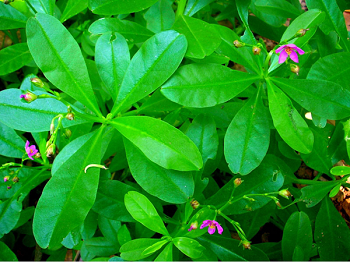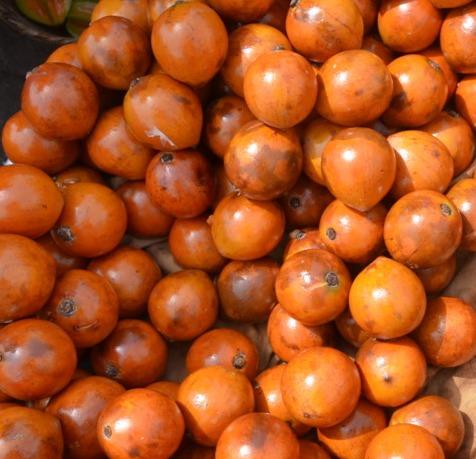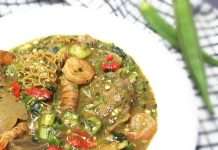Waterleaf (Talinum triangulare, Fam. Portulacea), a herbaceous annual and perennial plant is an edible leafy vegetable that is often neglected in Nigeria, and sometimes regarded as a nuisance or a weed that grows all year. It is called gbure in Yoruba, gbolodi in Ibo, ebe-dondon in Edo, and in English, it is nicknamed Philippine spinach, sweetheart, flame flower, Florida spinach and so on. This vegetable is originally from West Africa before spreading to other parts of the world such as Asia and South America.
As the name suggests, this green leafy vegetable has a high moisture content of approximately 90.8g per 100g of the leaf. Studies reveal that the waterleaf is rich in iron, thiamine, lead, copper, riboflavin and niacin. Preliminary phytochemical study on this vegetable by Ezekwe et al shows that it is a rich source of vitamin C, vitamin E, Omega -3 fatty acids, calcium, magnesium, soluble fibres (pectin), potassium, β-carotene, proteins and dietary fibre.

Furthermore, Enete and Okon (2010) pointed out that waterleaf is a rich source of crude-protein (22.1%), crude fibre (11.12%) and ash (33.98%). All these vitamins and minerals contribute to high antioxidant values of the vegetable.
Culinary uses
Waterleaf is highly nutritious, refreshing and tasty. As such, it is used in several cuisines for preparing assorted dishes such as waterleaf soup, waterleaf stew, waterleaf sauce, waterleaf pizza, vegetable soup (edikaikong, ofe mgbolodi, gbure, afang soup and so on). To prepare vegetable soup, the young shoots and leaves of the waterleaf are usually combined with either corchorus (jute) leaves, fluted pumpkin leaves and gnetum africanum (okazi leaves). These types of vegetable soup are a popular soup in Igbo, Yoruba, Efik and Ibibio communities.
Waterleaf sauce can also be eaten with roasted yams, roasted plantains or roasted potatoes. Always remember not to overcook the vegetables in other to avoid significant loss of its vitamins and minerals contents.
Pharmacological actions
The waterleaf is excellent for diarrhea, liver enlargement, and hepatitis. It is an excellent immune booster to those who often feel weak and tired, and those prone to frequent attacks of malaria. In many scientific studies and trials, waterleaf showed that it can inhibit proliferation of cancerous cells, shrink tumours, fight insomnia, enhance brain activities, while also demonstrating cerebral-protective potential.
Waterleaf is said to have anti-inflammatory and diuretic properties, useful in weight reduction, constipation and indigestion. It is good and safe for pregnant women and growing children, as it boosts their blood levels. Eating waterleaf regularly as soup helps to regulate hypertension and diabetes.
Preparations
While waterleaf is very beneficial when it is taken as vegetable, dried herbs and infusion, the juice is more efficacious. Pounded fresh waterleaf can also be used topically on inflammations.
Economics of waterleaf
In a study in Akwa Ibom, Anselem Enete and Ubokudom Okone reported that the average net income per hectare per waterleaf production cycle was ₦322,413 while the average total cost was ₦89,307.18. The profitability index (0.78), rate of returns on investment (361%), rate of returns on variable cost (482%), and operating ratio (0.21) suggest that waterleaf production was profitable in the study area.
Nya, Okorie and Eka revealed that there is scope to increase production and income from waterleaf farming in extensive and semi-intensive systems in southern Nigeria. By applying more inputs like improved cuttings, water irrigation, good cultivation tools and fertilizers in the study area, all farmers made more profit.
Caution with bitterleaf
The presence of 90% of the oxalate in a soluble form can induce kidney stones if taken in excess.
Waterleaf also contains hydrocyanic acid, thus this vegetable should be consumed raw in small quantities only, and it is not recommended for livestock.
Avoid the use of this vegetable in infant foods, since it contains nitrates and nitrites, which are not removed by cooking.
Waterleaf is rich in saponins, which are poorly absorbed and removed in the cooking process.
Most of the oxalate and hydrocyanic acid are destroyed by cooking.
Conclusion
Waterleaf is a very important plant that has aesthetic, culinary, health and economic benefits. More attention should be paid to this plant to harness all its benefits that touch different aspects of our lives.











generic drugs without doctor’s prescription: https://genericwdp.com/ buy prescription drugs online without
generic tadalafil 40 mg: http://tadalafilonline20.com/ generic tadalafil united states
This a nice article about water leaf, this article helped me on my assignment.